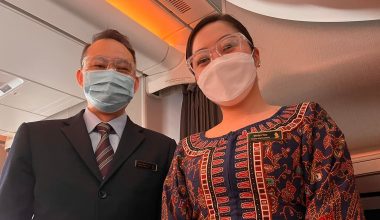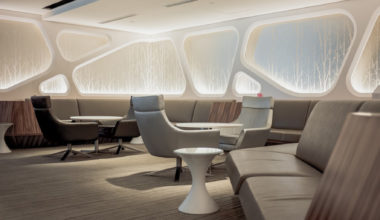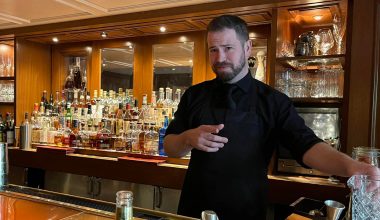If Singapore Airlines (SIA) is synonymous with Singapore, there is a good reason: Each reflects the other perfectly in the mirror of global public opinion. All national airlines are supposed to convey an inimitable sense of the best values offered by their home countries, but some do it better than others. SIA does it best.
This is because both the country and its signature airline are orphaned entities: They have to thrive merely to survive. Singapore’s unwanted departure from Malaysia on August 9, 1965 thrust it into the international wilderness, to live or perish on its own. Failure was not an option: Hence, its business became Singapore’s business. The arrival of SIA in 1972 embodied the same logic.
Its origins lie in Malaysia-Singapore Airlines, which was separated into two airlines, the Malaysian Airline System (MAS) and Singapore Airlines. SIA had to learn to touch the skies with wings of its own. If that sounds poetic, the reality was not. Business would have to be its business. Singapore’s founding Prime Minister Lee Kuan Yew told staff at the company’s inaugural dinner: “I set up Singapore Airlines to make profits. If you don’t make a profit, I am going to close down the airline.”
Lee was not bluffing. If the national airline could not be profitable, there was no point in having it. This was harsh but realistic and no more realistic than the truth that if Singapore itself could not pay for its place in the world, the world would do without Singapore. What applied to an entire country could not but apply to the national flag carrier. Mr Lee’s occasional run-ins with SIA trade unionists reiterated the economic logic of nations and their economic institutions. The logic is that the latter must implement the survivalist strategies of the former. Airlines must compete economically in order to survive, much as their parent nations are compelled to compete economically, politically and militarily to survive. The world does not owe Singapore a living.
Hence, Singapore cannot owe SIA a living. Instead, Singapore owes itself a living in the world. Likewise, SIA owes itself a living within the Singapore economy. In fact, SIA is dispensable. What is indispensable is Changi Airport’s position as a regional and global aviation hub. SIA is a business but Changi is geography. Businesses come and go but geography stays.
I cannot imagine Lee’s 1972 speech as having gone down well with the convivial meal that must have been served at that dinner. But I would be amazed if it did not lay the foundations of SIA’s branding — branding not in the promotional sense of marketing and advertising (of which more later) but branding as the act of being marked with a branding iron. Right at its inception, SIA’s management and staff understood that they did not enjoy any national sinecure — any more than Singapore could draw a pension from the world as a supernumerary state. SIA’s baptism of fire would have to reflect the iron branding of Singapore’s own ejection from Malaysia.
Since those years, Malaysia too has done well, as has MAS. That is to be welcomed because Malaysia’s success can feed back into Singapore’s own. But that is another story.
As for SIA, it has fared better than even Lee could have imagined. This is because the airline’s leadership internalised and continues to incorporate the survivalist ideology of an island city-state with few natural resources. This is seen in the succession of leaders that SIA has had.
Peter Seah was preceded as chairman by Stephen Lee, Koh Boon Hwee, Michael Fam and JY Pillai. Chief executive Goh Choon Phong stepped into the path-breaking shoes of Chew Choon Seng, Cheong Choon Kong and Lim Chin Beng.
These people were (and are) not political appointees given their positions because they pleased the Establishment, particularly in a country where the ruling People’s Action Party dominated every area of national life and Lee Kuan Yew towered over the country with his exacting gaze. Each of them was a person of substance whose skills and dedication had been proved before they were elevated to their positions in SIA. Their SIA roles recognised their contributions to national life and gave them an opportunity to extend those contributions into building up the airline which in turn would build up Singapore’s international reputation for efficiency, punctuality and personalised service around the world.
In every way, SIA became a microcosm of Singapore.
Evolution of branding
This is the other meaning of branding (the first mentioned earlier as branding with the iron of realism). SIA’s fabled branding is associated quite rightly with the semi-mythical status achieved by the Singapore Girl, that elusive symbol of feminine mystique and sensuality whose perfumed grace lures travellers from around the world to taste hospitality with an Asian face and a Singapore smile. She is a product of times when she would not be seen as a sexist male advertising creation designed with male, older and European/American passengers primarily in mind.
Today, in the welcome wake of the feminist and other global movements, her figure has transformed itself to represent femininity with a progressive Asian face. The Singapore Girl is no longer a docile doll pandering to white male sexual fantasies. Today, she goes places — as SIA does. She has been transformed into an emblem who conveys the wider reality of female empowerment in Singapore, which is in keeping with the country’s pace in globalisation.
That spirit of the transformation is captured perfectly in SIA’s brand campaign, named “The Lengths We Go To”, launched in 2013. The Singapore Girl, who plays the protagonist in three short features filmed on location in Fujian in China, Glasgow in Scotland and Venice in Italy, symbolises “the lengths to which we go to bring (customers) the feeling of home on every flight. The essence of the Singapore Girl and her gentle, caring ways remain especially relevant today.
In this ever-changing world, it is even more important for service excellence to be the key differentiator”, according to an SIA official. Marketing efforts never work if the expectations that they arouse are disappointed by the actual experience of the product. It is to SIA’s credit that the company seeks constantly to match expectations and experience as best as it can. This has happened because of the strong culture of excellence that permeates the company, right from the top leadership to ground staff to stewards and stewardesses. At SIA, people do not work only for a company: They work for a nation as well. SIA is Singapore personified.
Now, a corporate culture of excellence does not have to be tied to a nation. Branding can be a truly global phenomenon. My favourite example of the latter is the Four Seasons Hotel chain. It is an insistently global brand, with 52 properties in North America, four in Central and South America, 19 in Europe, 22 in the Middle East and Africa, and 31 in Asia and the Pacific. Yet, as I can attest from my stays at several Four Seasons hotels, the brand has achieved the supreme credit of seamless universality. I do not have to change out of myself depending on where I am. I remain myself wherever I go, my discerning tastes and demanding ways staying intact, so long as there is a Four Seasons door.
SIA is different. Unlike Four Seasons, it is a Singapore institution. However, branding remains branding. Just as Four Seasons has established itself as a global brand anchored everywhere and therefore nowhere, SIA is a national brand that anchors Singapore everywhere, at least in the more than 70 destinations to which the airline flies.
Thriving in a post-Covid world
That number points to the speedy recovery that SIA has made after the coronavirus pandemic almost stripped the skies of commercial aviation except for cargo flights, including those carrying supplies of vaccines. SIA Group’s financial performance in 3QFY2022/23 ended December 2022 is heartening. The group reported the highest-ever quarterly operating profit and nine-month operating and net profits; record passenger load factors for the group based on robust demand across the network; and a strong momentum in forward passenger sales for the fourth quarter, although weaker global demand and increased capacity weigh on the air freight segment.
Buoyed by the engines of global demand, SIA is pursuing deeper collaboration with like-minded airlines. The strategy enables SIA and its partners to drive more traffic to their hubs, offer more options to customers and increase the group’s global footprint. A case in point is the agreement reached between SIA and Tata Sons in November 2022 to merge Air India and Vistara, with SIA making a further investment in Air India as part of the transaction. As SIA sees it, the proposed merger will bolster its presence in India, strengthen its multi-hub strategy, and allow it to continue participating directly in a large and fast-growing aviation market.
Of course, neither SIA nor Changi will remain unchallenged. Gulf airlines have emerged as a contender for the aviation crown with a combination of efficiency and in-flight service. There are other airlines elsewhere that have got their act together. This is good. Competition is the key to success. That is how SIA came to be what it is today: Remembering the iron laws of gravity should help it to maintain its flight through the changing skies.
Lee Kuan Yew was born 100 years ago. Today, apart from Singapore in general, it is SIA in particular that carries his legacy best. Lee did not have to carry out his threat to shut SIA down.





